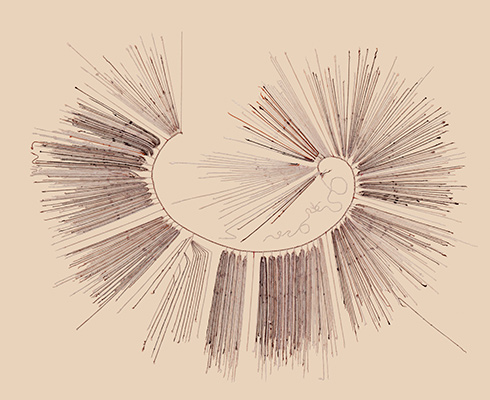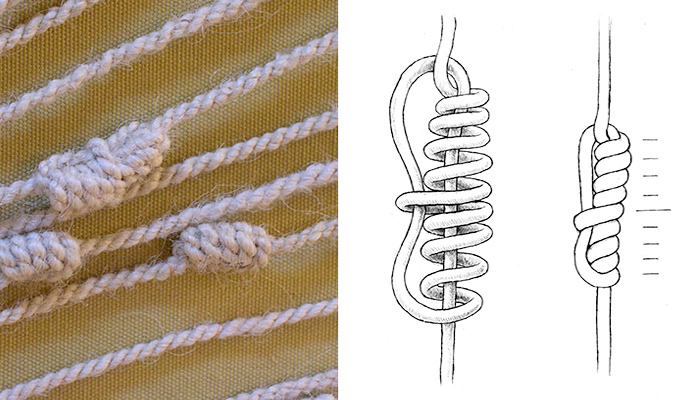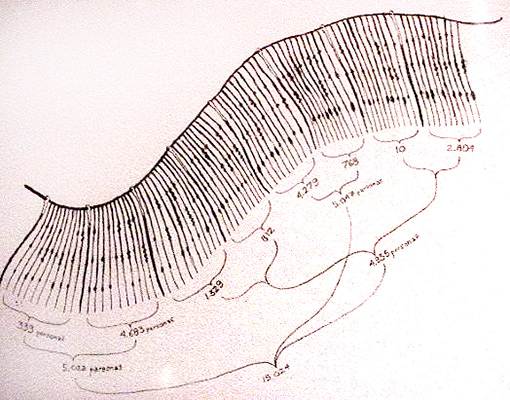Quipu: Counting with knots in the Inka Empire – 2003
- Record-keeping with knots
- The quipu and writing
- Tawantinsuyu , the Inka Empire
- The Quipu, and the needs of an empire
- Quipus and tribute
- Basic parts of a Quipu
- Making a Quipu
- Quipus and numerical values
- Narrative Quipus?
- Los distintos usos del Quipu
- Quipu of Arica
- Quipucamayoc , Lord of the Knots
- Quipus in the colonial era
- Epilogue
- To know more about Quipus
- Crédits and acknowledgements
Quipu of Arica
This quipu, made entirely of camelid hair, was found in an Inka cemetery in the Lluta Valley, in Arica, and through meticulous study and radiocarbon dating, ascertained to be around 450 years old.
It has a total of 586 strings, including 88 Pendant Strings bearing up to 13 levels of Subsidiary Strings. All of the strings, composed of two Z-spun/S-plied threads, are attached with an obverse knot to the Primary Cord, also a Z-spun/S-plied string. Most of the strings are of natural hues – either of only one color or with a mottled effect. Occasionally, red was used to differentiate some of the Pendant Strings without knots that serve as separators within the entire group. A “reading” of the knots, arranged in decimal order, allowed tabulating a total of 15,024 units in different categories, whose identities are still not known. In addition to having the three traditional types of knots, this quipu features one that had never been seen before in other Andean samples. This new knot, denominated “Knot with a Belt,” occurs only three times and is always found above Long Knots with the value of nine.
This particular knot appears on only one other quipu, also from the coast of Arica, which may mean that it represented a kind of identification mark for the quipus that came from this part of Tawantinsuyu.







































